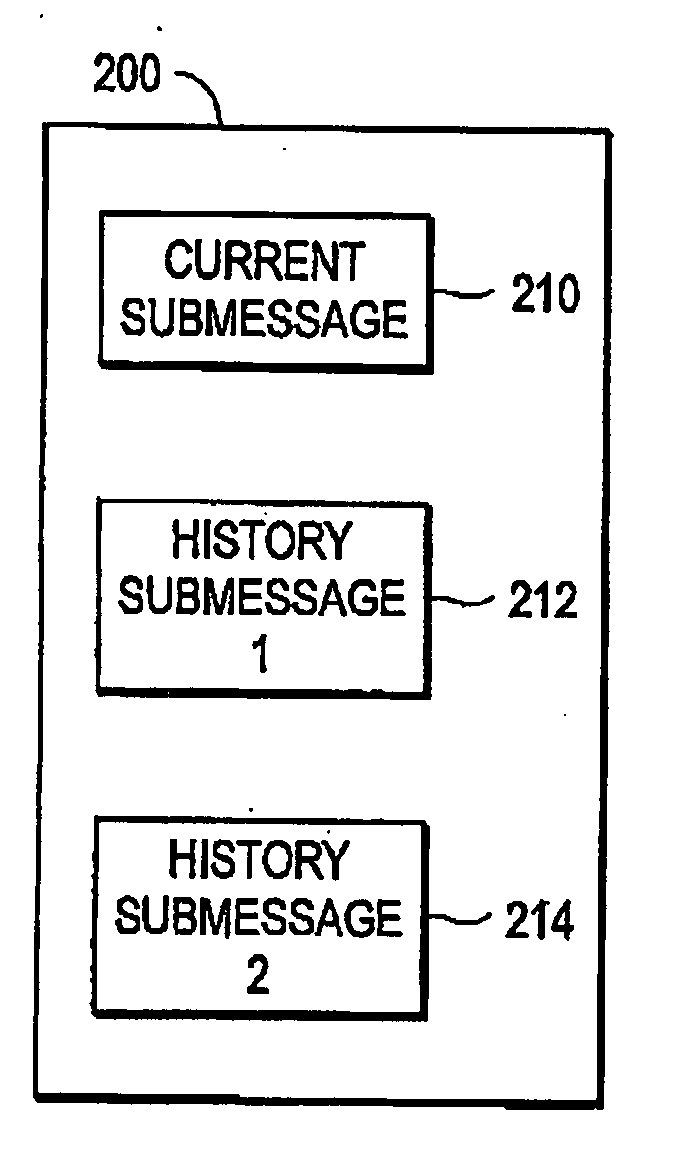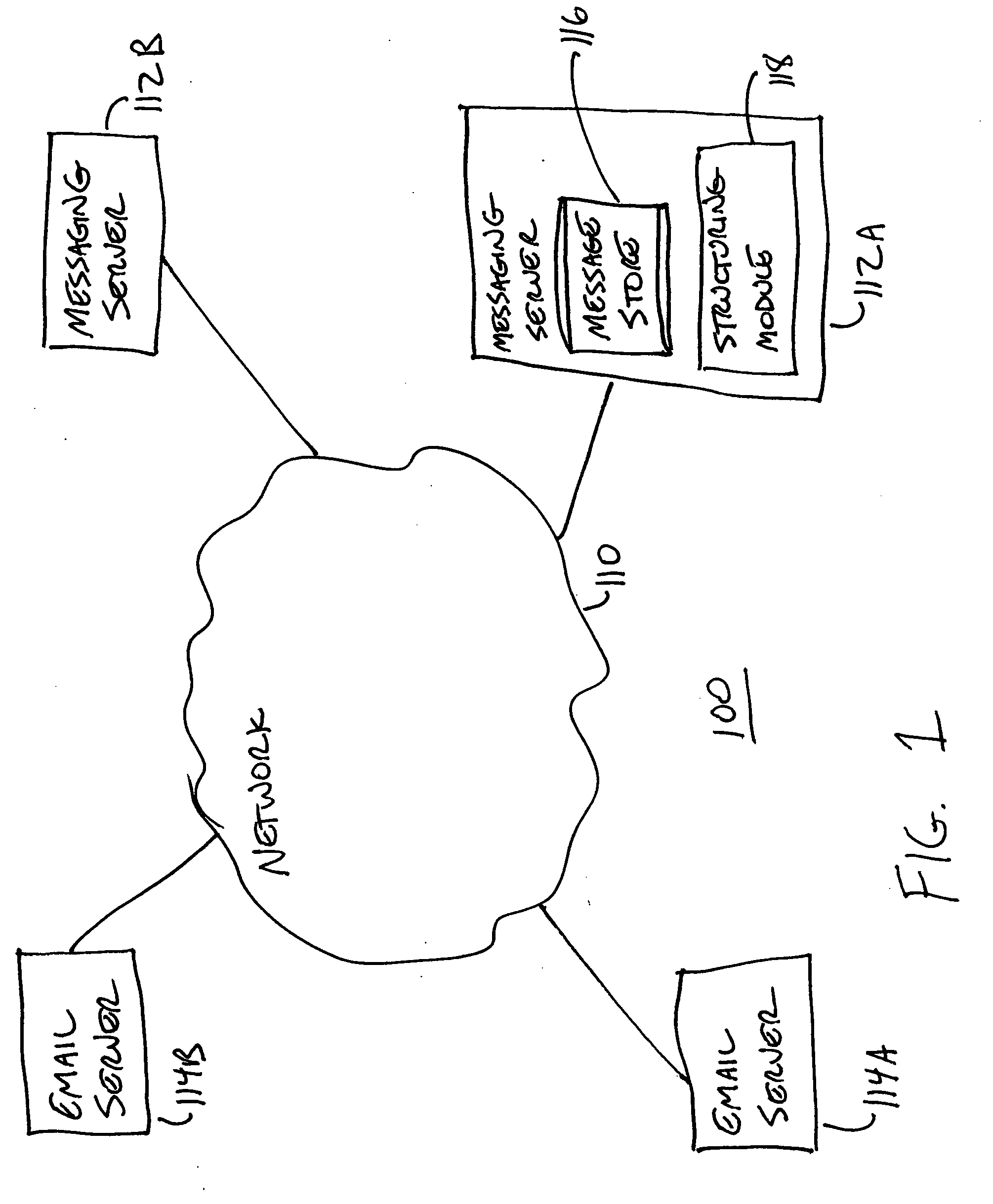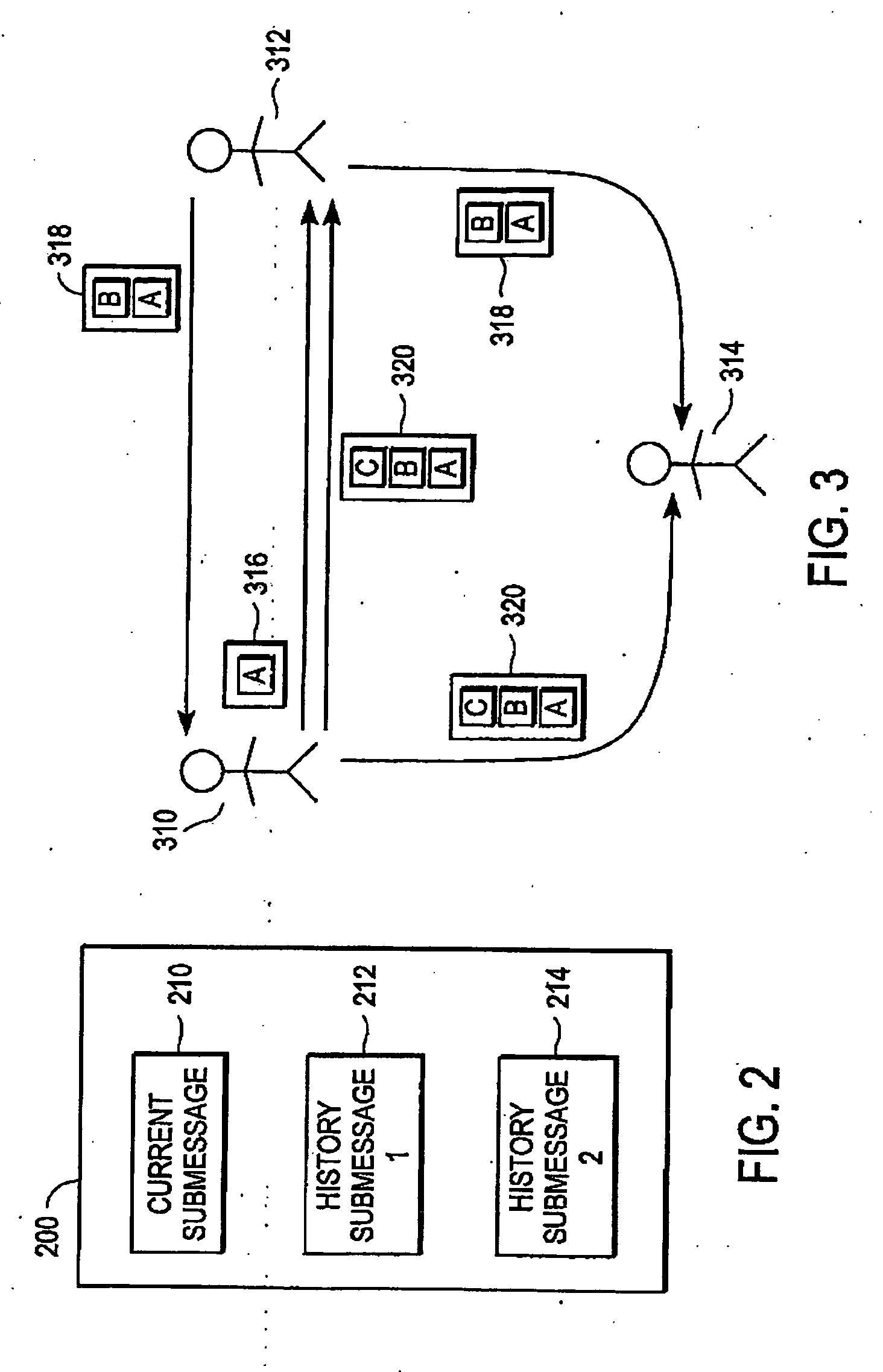Generating relational structure for non-relational messages
a non-relational and message technology, applied in the field of electronic messages, can solve the problems of difficult to enforce retention policies, access rights, security or any other property onto messages, and simple text strings, and achieve the difficulty of performing a forensic analysis on a set of messages
- Summary
- Abstract
- Description
- Claims
- Application Information
AI Technical Summary
Benefits of technology
Problems solved by technology
Method used
Image
Examples
Embodiment Construction
[0020]FIG. 1 is a high-level block diagram illustrating an environment 100 including an embodiment of a messaging system. The environment 100 of FIG. 1 includes a network 110, two messaging servers 112A, 112B, and two email servers 114A, 114B. End-users use clients of the messaging 112 and email 114 servers to exchange messages with other end-users. An end-user can perform various actions on messages, including composing, sending, reading, replying to, and forwarding.
[0021]FIG. 1 and the other figures use like reference numerals to identify like elements. A letter after a reference numeral, such as “114A,” indicates that the text refers specifically to the element having that particular reference numeral. A reference numeral in the text without a following letter, such as “114,” refers to any or all of the elements in the figures bearing that reference numeral (e.g. “114” in the text refers to reference numerals “114A” or “114B” in the figures).
[0022] The network 110 enables data ...
PUM
 Login to View More
Login to View More Abstract
Description
Claims
Application Information
 Login to View More
Login to View More - R&D
- Intellectual Property
- Life Sciences
- Materials
- Tech Scout
- Unparalleled Data Quality
- Higher Quality Content
- 60% Fewer Hallucinations
Browse by: Latest US Patents, China's latest patents, Technical Efficacy Thesaurus, Application Domain, Technology Topic, Popular Technical Reports.
© 2025 PatSnap. All rights reserved.Legal|Privacy policy|Modern Slavery Act Transparency Statement|Sitemap|About US| Contact US: help@patsnap.com



